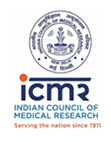Single-use safety kit per patient
Offer available on home collection only
We'll Ensure You Always Get the Best Result
Laboratory analysis may be carried out for a number of reasons – usually linked to ensuring a product has been manufactured to meet specifications and regulations and is safe to be released to the market.

This is a wider card with supporting text below as a natural lead-in to additional content. This content is a little bit longer.
Laboratory analysis may be carried out for a number of reasons – usually linked to ensuring a product has been manufactured to meet specifications and regulations and is safe to be released to the market.

This is a wider card with supporting text below as a natural lead-in to additional content. This content is a little bit longer.
Atulaya in Numbers

Years of Experience

Clients & Quality Practices

Analysis Laboratory Tests
Selected Package
Includes Tests
₹